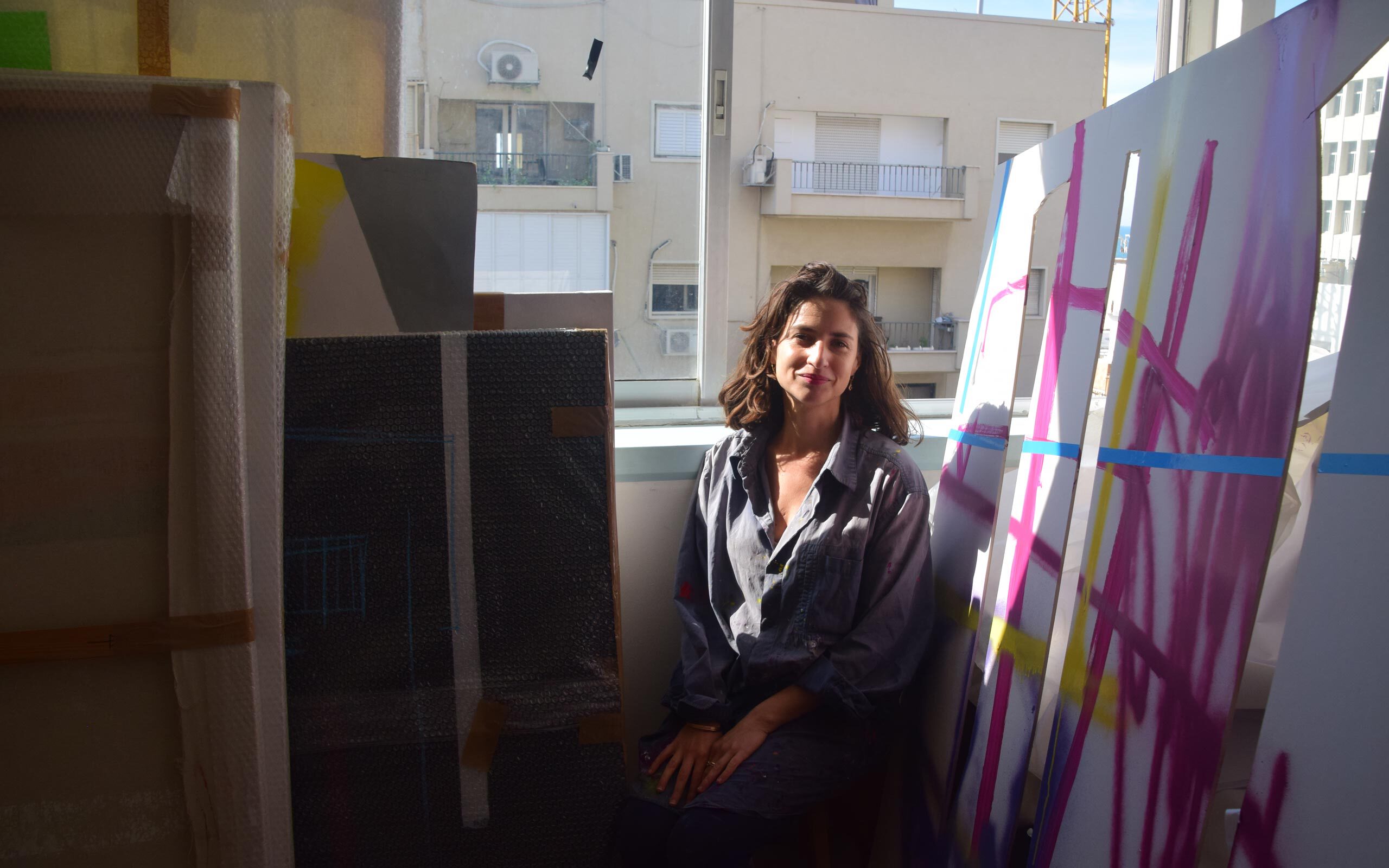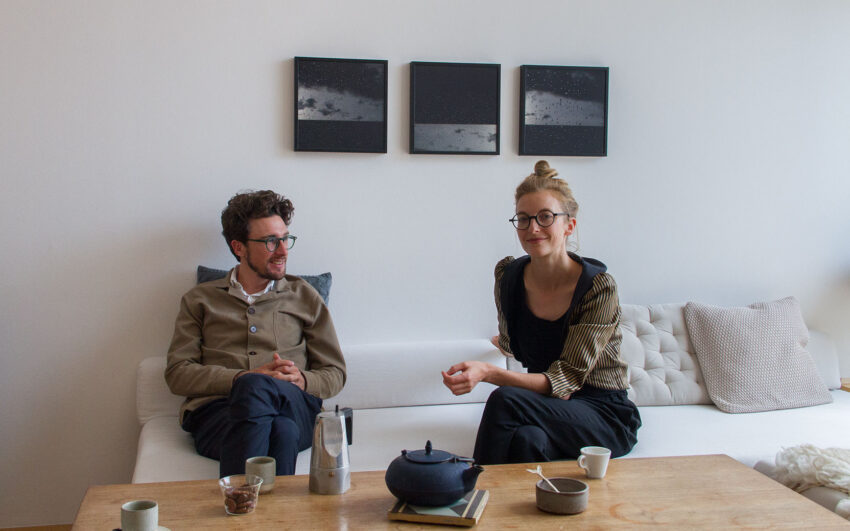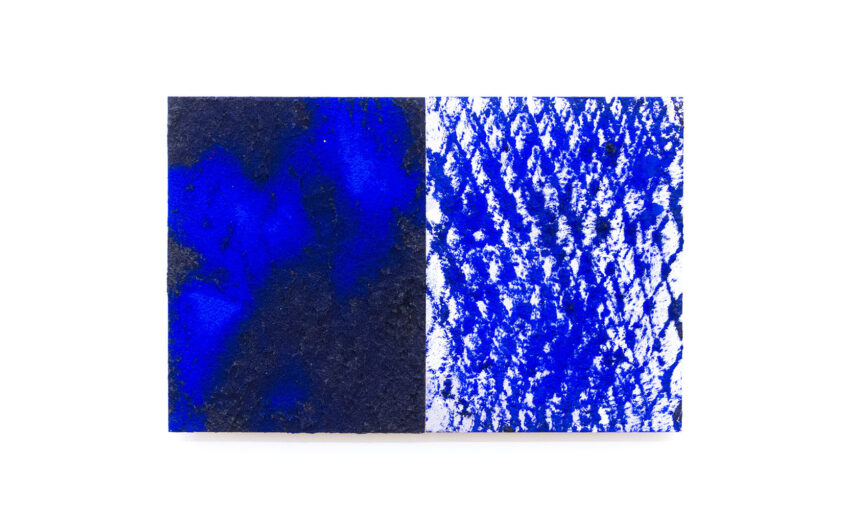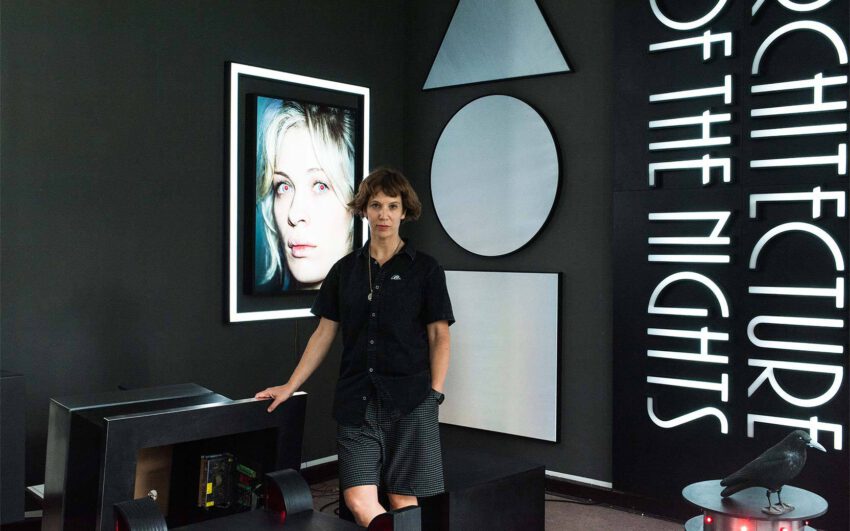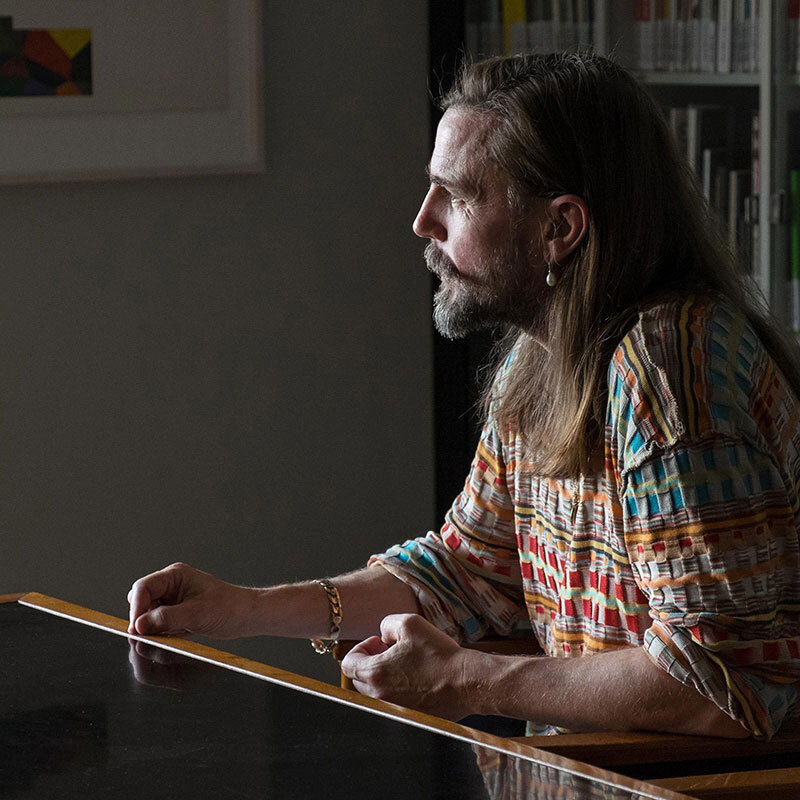This story has emerged in cooperation with Art Source, a unique online platform that provides exclusive access to discover and collect Israeli art. Deeply immersed in the local art scene, Art Source creates an online home for anyone who wants to take part in the contemporary Israeli art community. Art Source’s services also include art advisory and bespoke art tours of Tel Aviv’s art and design scene.
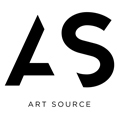
The colorful paintings and installation works of Israeli artist Iva Kafri are unapologetically enigmatic. Fusing together mixed media including spray paint, plexiglas and wallpaper, she compels viewers to piece together the components of the puzzles she builds. The results of her creative process may look like a window opening onto a joyful world, but the creator behind it is carefully striving to maintain her balance on a taut tightrope.
Iva, I want you to take me to the beginning of your path to your becoming an artist. What made you start creating? Is there a moment you can point to?
I was a child who always painted, I come from a family of artists. It was really what I liked doing the most for as long as I can remember, so I can say I have always been a painter. But it wasn’t a so-called ‘adult’ choice. When I was 18, I moved to Paris and I decided to try to obtain acceptance into an art school, because that would give me a reason to stay in the city, and also provide a space in which to paint.
I actually really loved cinematography, and had this fantasy about being a filmmaker. But after taking a video making course in my first year of school, I was unable to connect to the process of sitting in front of a computer and editing. Suddenly I realized that I had never fully valued the immediacy of the painting process, the fact that the process is in itself meaningful, not only the final result. Eventually I understood the meaning of what I had been doing my entire life; the language of painting was like an additional mother tongue I possessed, and until then had taken for granted.
That’s such a beautiful way to put it. Now, if I asked you to describe what you have been trying to express through your art since that moment of realization, how would you define it?
I think that I make scenic situations, and my aspiration is for there to be as little distance as possible between myself and the things I make as I make them. These situations merge into and with my consciousness, my subconscious, chance elements, and with time itself. They are like a little encapsulation of me; an expression of a very complicated situation that belongs entirely to me.
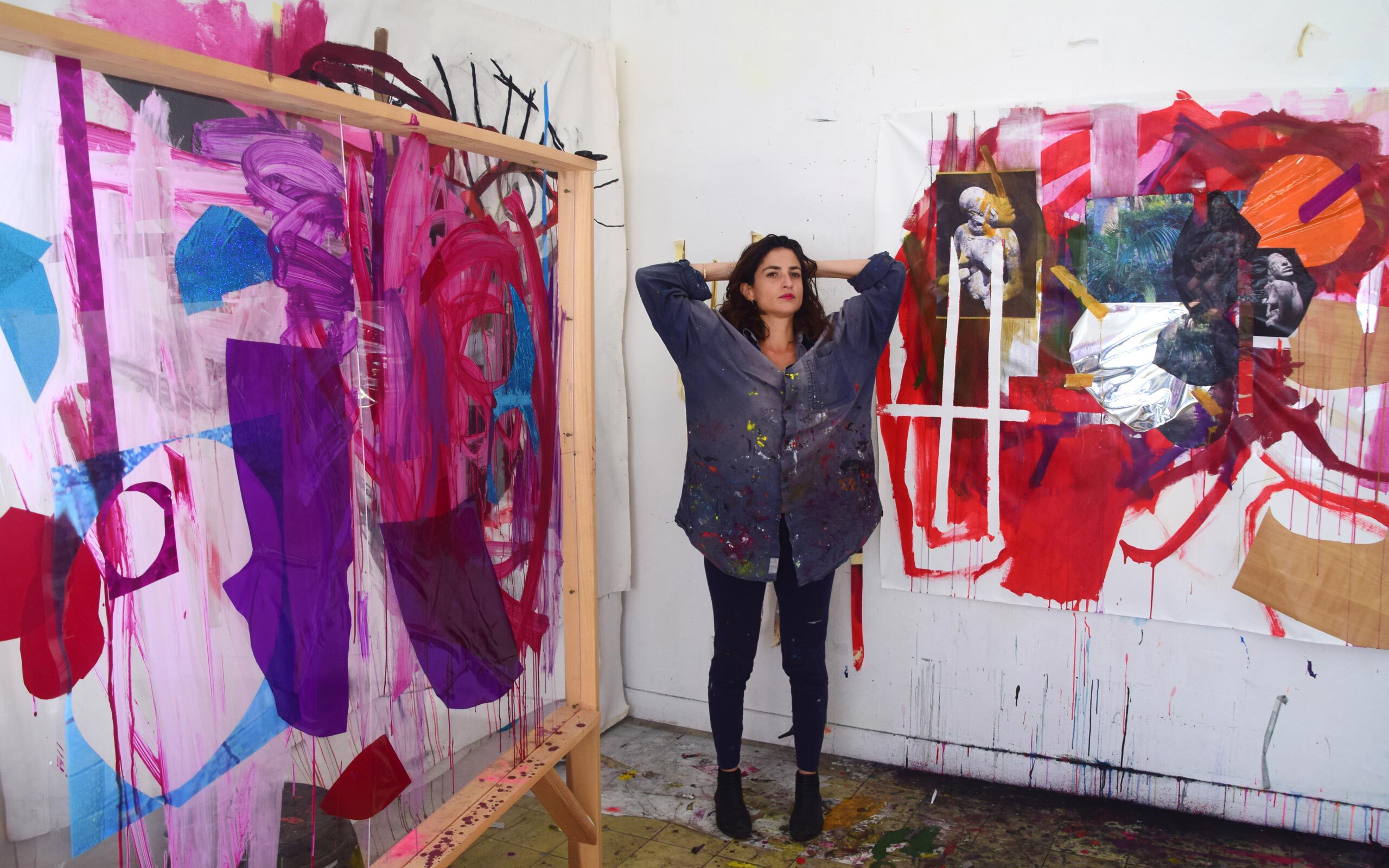
Speaking of complicated situations in which we find ourselves, do you think of the art that you make as Israeli or inspired by Tel Aviv? I’m sitting here in the studio with you and your window is overlooking a bustling street and a sliver of the Mediterranen.
There is no direct or conceptual link between my art and the specific reality around me, but I am connected to Israel and my paintings are connected to me. There is something about growing up in Israel that has affected my gestures. It's also evident in the violence, patience, or its lack thereof, that I bring with me into the painting. So I guess that if I were Canadian, for instance, my paintings would look entirely different. Or maybe not? It’s too late to find out (laughing).
Are there artists whose work you carry with you to this day, who have influenced the decisions that you make as an artist?
Yes, of course. There are discoveries I remember making as a child that are part of my core as an artist, like the works of Gauguin, Matisse, Rauschenberg. These are the very first artists who moved me because they had a way of communicating through color and a certain kind of sensuality and freedom that I value. When I lived in Paris, during times when I was in low spirits, I would go into this little room at the Centre Pompidou to look at paintings by Matisse. It felt like coming home to a familiar friend, it was thrilling and soothing at the same time.
It’s surprising that you are such a fan of Impressionism, because your work is so decidedly abstract. So much so, in fact, that it took me several years of seeing it to feel a connection. Do you think that these large-scale, obscure projects of yours are sometimes misinterpreted or looked at from the wrong perspective?
I often made site-specific art that played a lot with the spaces where I had showed my paintings. Sometimes I felt like I was being branded as the painter who paints on the walls. I didn’t like being categorized in this way. For me it didn’t really matter what surface I was painting on, but rather what the painting itself was. I know that abstract painting is really hard to talk about, so maybe that’s why it was easier for others to describe the aspect of space in my work. But I cannot, nor would I want to control the reaction of the viewer.
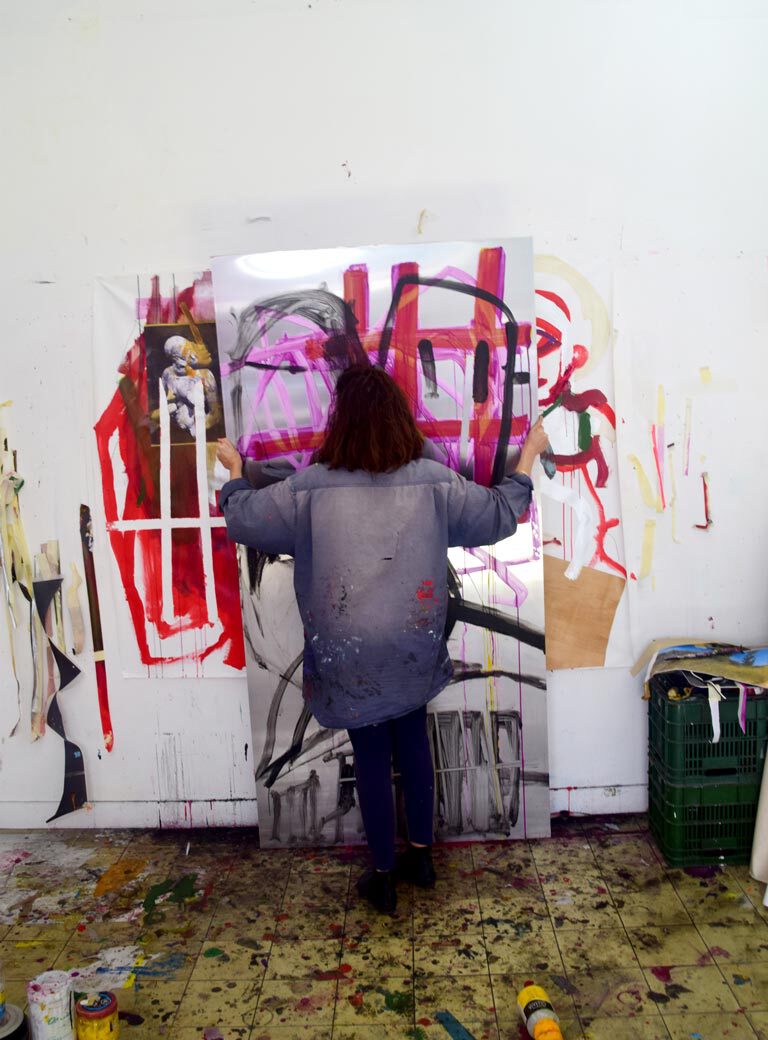
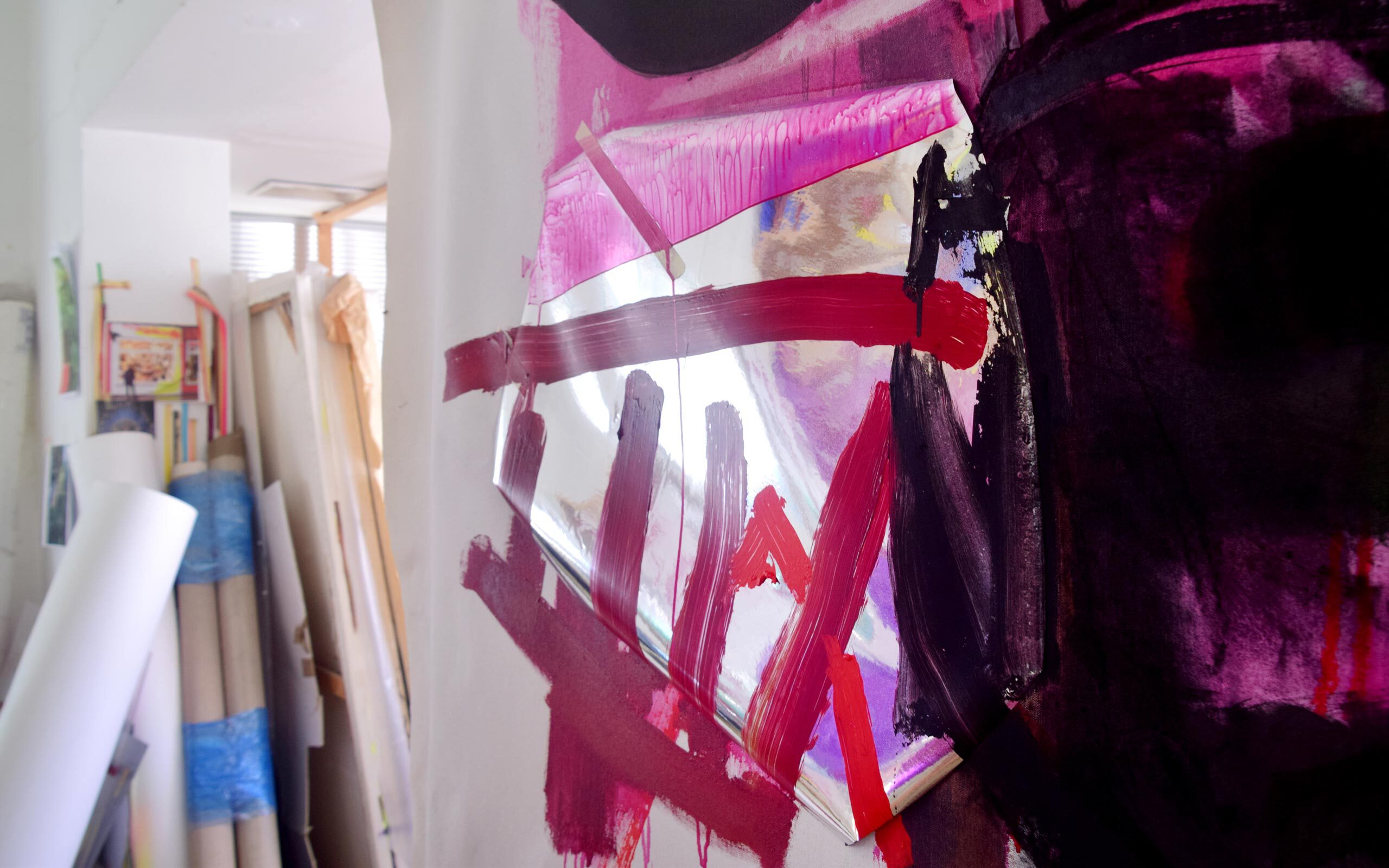
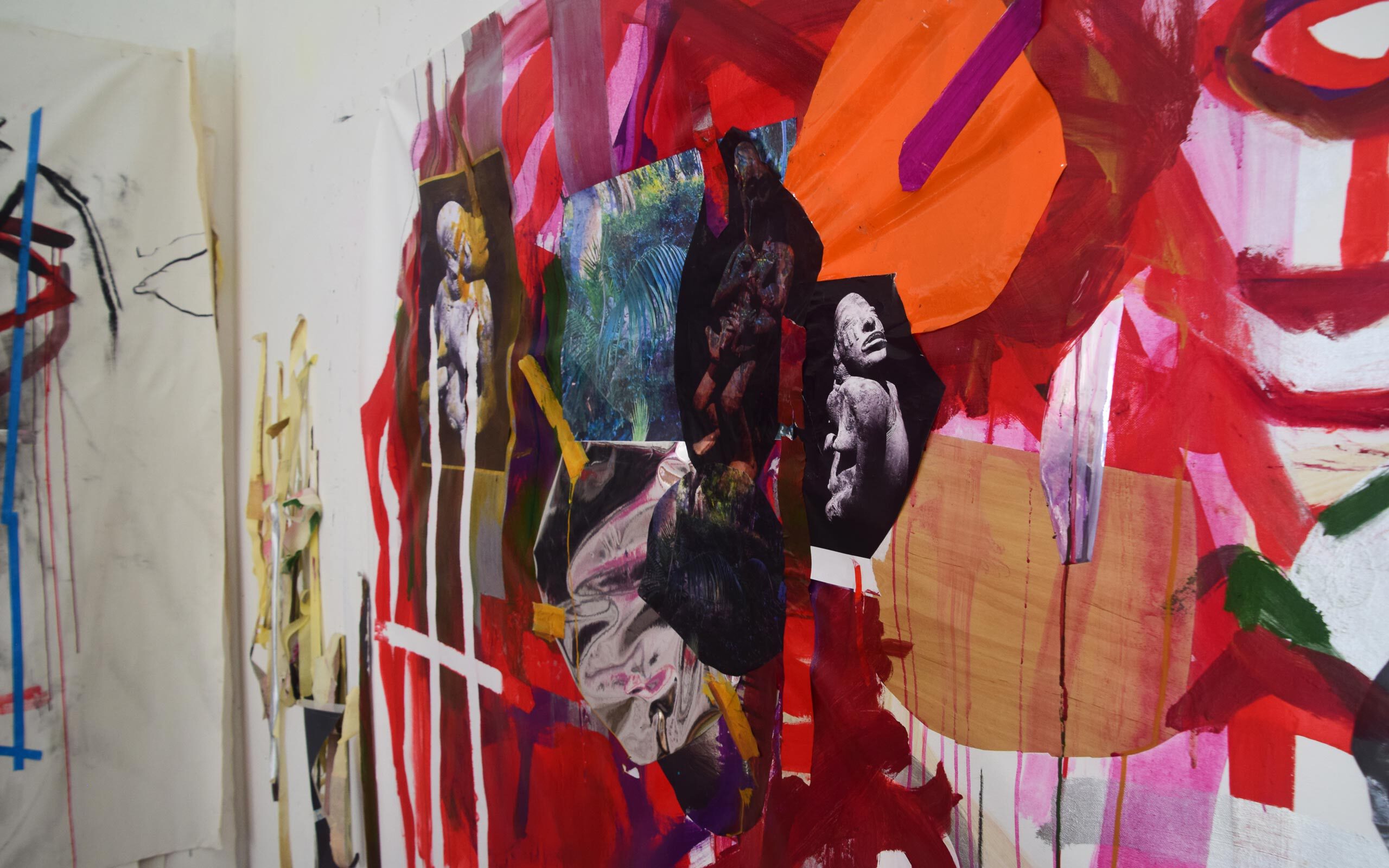
You incorporate photographs into your paintings, which tends to lend them the quality of assemblages. Is that something that you decide on in advance when you start working on a painting, or do you suddenly realize that the photograph has to be part of the visual landscape you create?
Photographs are always present in my work space. Often, before I prepare for a new exhibition I look at pictures that I have taken since my previous exhibitions, and print them as a starting point. Recently I’ve been working a lot in the studio without having a specific exhibition in mind, and I also work with images from earlier periods. In general, I feel more and more free in my work. The photographs help me connect to a certain feeling they evoke, and sometimes they don’t just serve as a source of inspiration, but find themselves inside the paintings.
That’s interesting, because photography is such a precise medium. You have to capture a very specific moment through the lense; doesn’t it clash with your free approach to painting?
Well, I’m not a photographer so I use photos as emotional capsules. At the same time, I use their formal qualities and integrate them inside the painting. I use photographs very intuitively, it’s the same as my choice of colors. I see them as elements both as elements I use, an inspiration or a material inside the painting. So it’s very different from being a photographer.
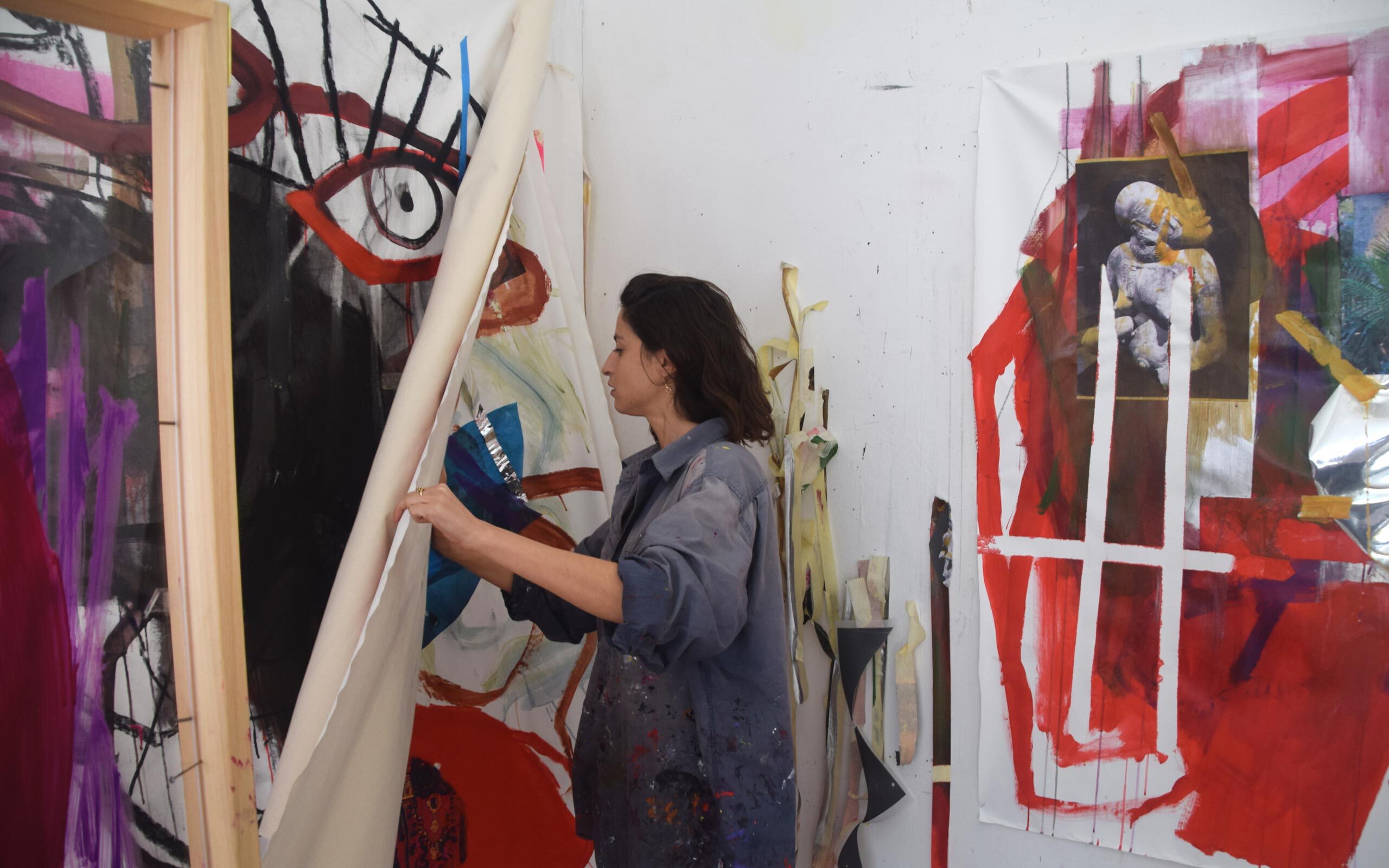
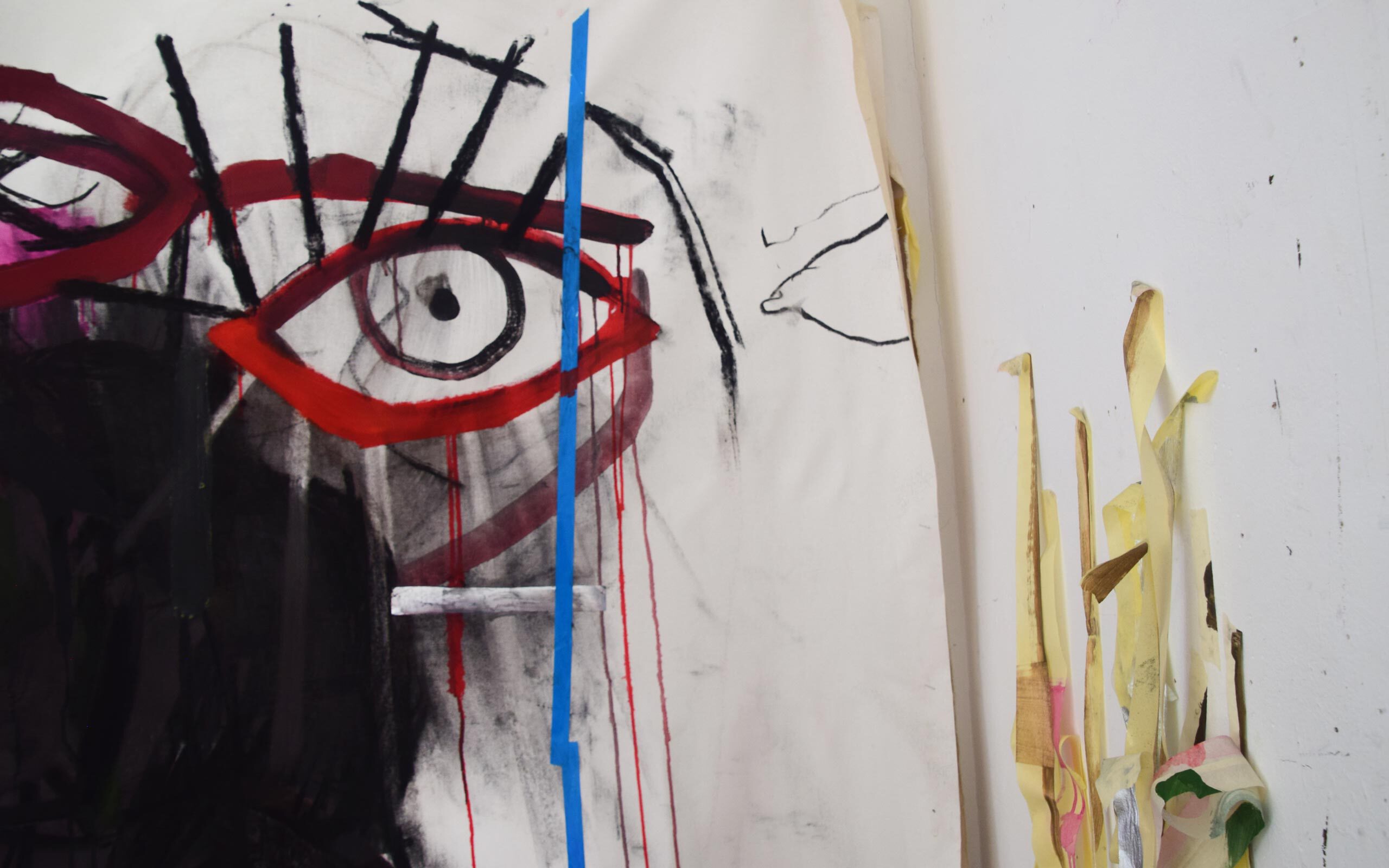
You tend to create paintings that are very large in scale. Is that the method that you naturally gravitate toward? Are you ever tempted to work on smaller compositions?
Yes, the size of the paintings is very important to me. I experience painting as a very physical process, and working with a small canvas makes me feel tied up and restricted. I also respond to the spaces I work in and try to play with them, be it a museum or a gallery where I’m presenting my work, or on the walls of my studio. For me, the act of creating is essentially the act of opening myself up to the world.
Funny that you should mention the notion of opening up, because it appears to me that movement is such a significant part of both your process and your visual language. Are the ideas of contact and physicality essential to your practice?
Certainly, they are essential. Painting is first of all a physical act. I also really adore dance, it’s one of the artistic mediums that I connect with the most. For me, dance is about creating a presence. And that is the kind of physical presence that I hope to manage to bring into my paintings. It is almost a desperate act sometimes; it’s like I’m leaving traces on the canvas that speak for me. They are saying: ‘Someone was here once.’
I didn’t expect you to refer to an act of ‘desperation’; when I observe your work, imbued as it is with rich colors, it conveys an almost child-like sense of brimming over with happiness.
Well, I’m not surprised you experience it this way. Freedom and passion are elements that draw me to the making of art, which is what you probably recognize as happiness. But I don’t agree that rich colors are necessarily happy. Different colors and their combinations contain a very ample variety of feelings. There is a certain abyss or a struggle that I always have to overcome as part of my creative process.
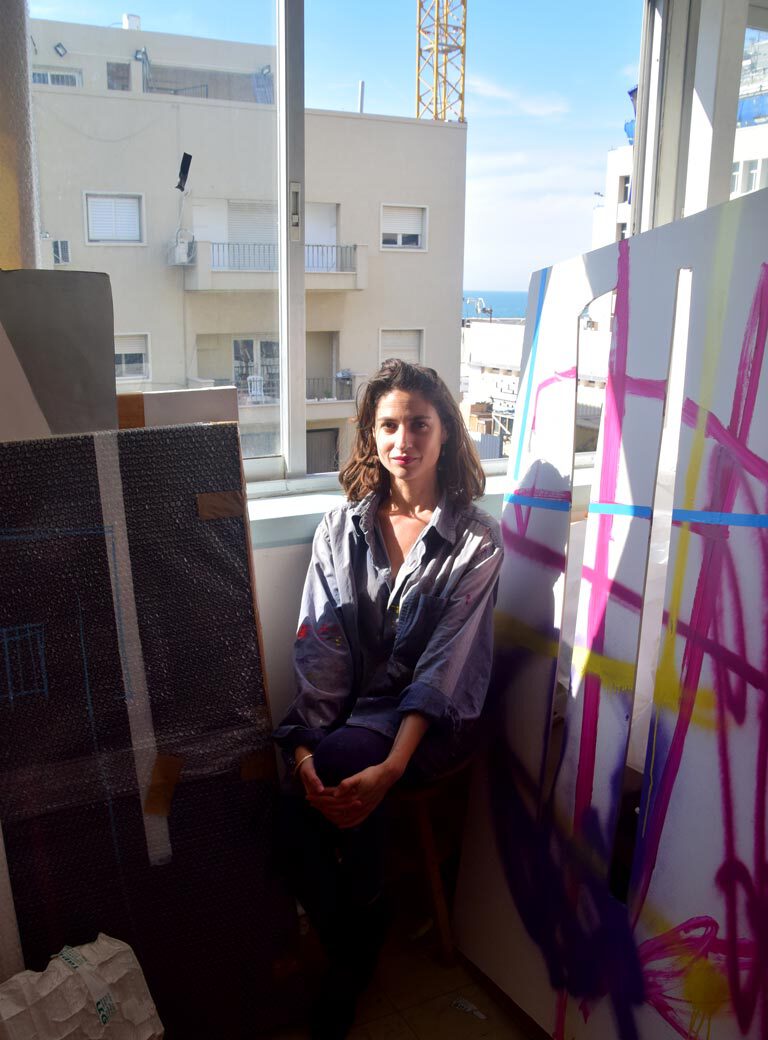
Interview: Joy Bernard
Photos: Sarah Peguine


